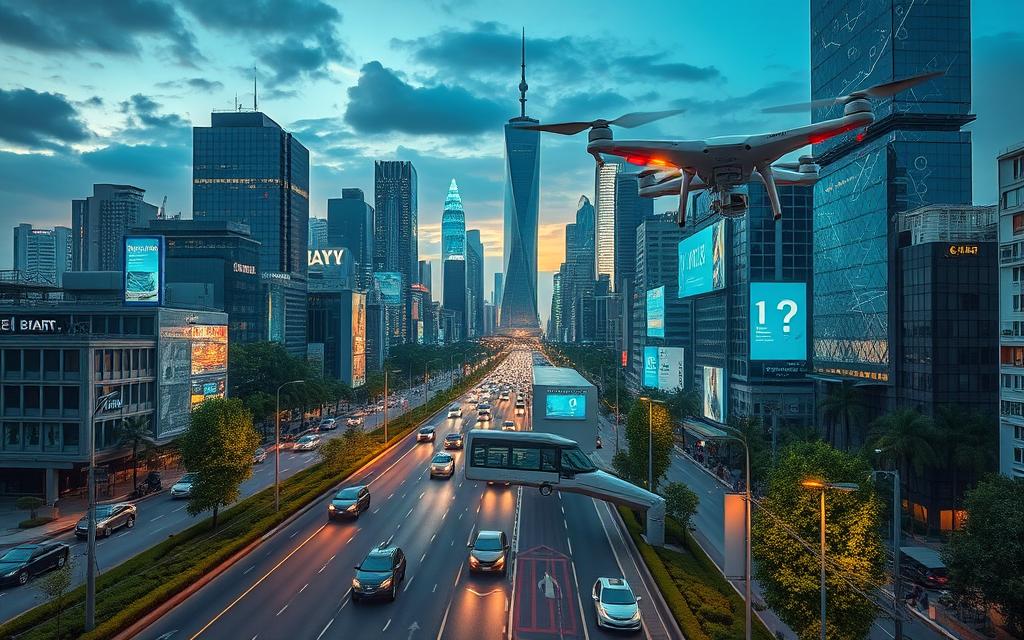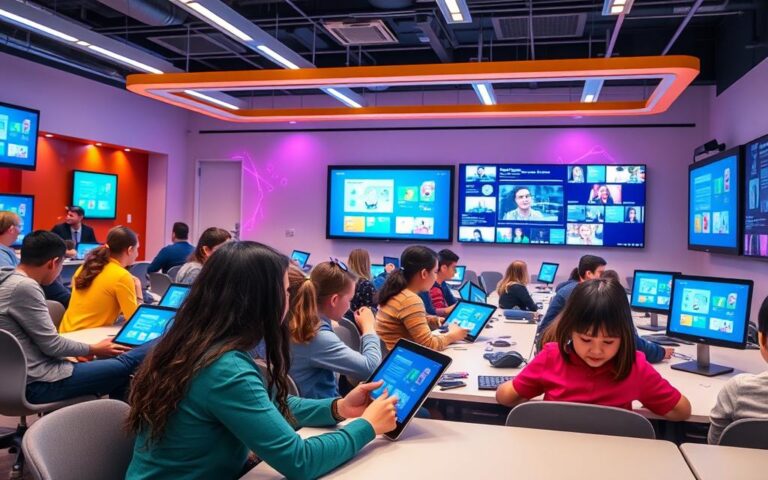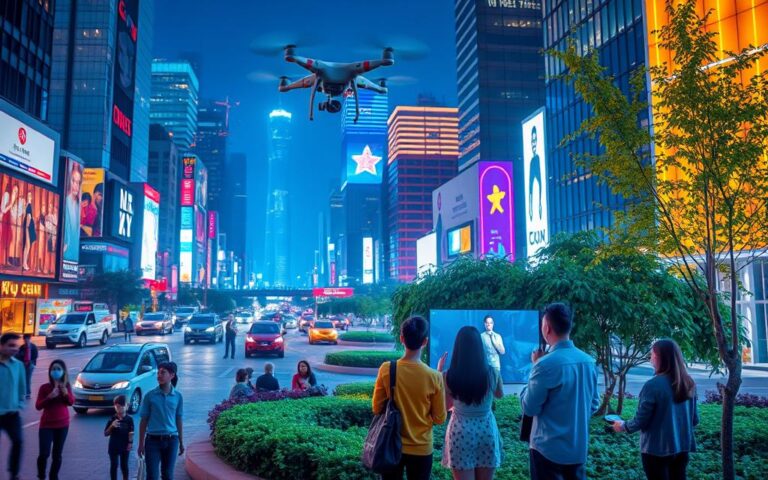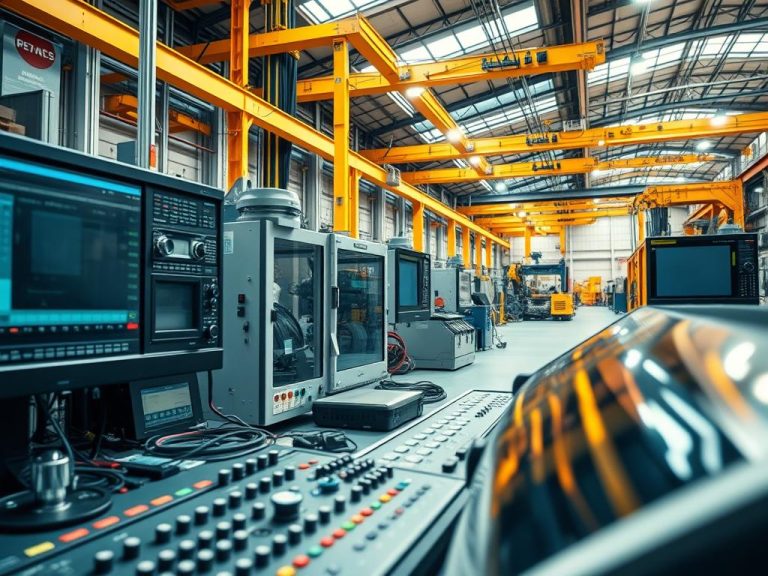Understanding “Smart” in the World of Technology
Today, smart technology is more than just a catchy term. It’s changing how we use devices and the internet. Smart means intelligent systems, like those in phones and fridges, getting smarter with AI and being more connected. These advancements make our lives easier and more efficient, especially at home and school.
But, as these intelligent devices become common, there are big worries. Mainly about keeping our information safe. More devices online mean greater risk of our data being stolen or hacked. That’s why programs like the Common Sense Privacy Program are crucial. They guide parents and teachers to pick safe smart technology. This is just the beginning of understanding the power and risks of smart technology.
What is Smart Technology?
Smart technology is changing how we use devices and systems. It makes use of artificial intelligence (AI), internet, and automation. Let’s look at what smart technology means, focusing on its main features and how it works.
Definition and Features
Smart technology is about systems that use AI, the Internet of Things (IoT), and machine learning. These systems work together to collect and analyze data. This leads to quick insights and future predictions. The main features of smart technology include:
- Autonomy: Devices work on their own, reducing the need for humans to control them.
- Adaptability: They adapt to changes in their environment, improving how they perform.
- User interfaces: They are easy to use, making personalisation better for everyone.
- Advanced security: There’s better security for keeping data and devices safe, which meets regulations.
How Smart Technology Works
Smart technology mixes hardware, software, sensors, and smart algorithms. Devices always gather data and use machine learning to find patterns. This helps in making smart choices. Automation is key, as it cuts down on how much humans have to do. This saves money too.
For instance, smart homes have thermostats and security cameras for more comfort and safety. Smart buildings have systems to manage heating, ventilation, air conditioning (HVAC), and lights. This helps in using less energy.
Examples of Smart Technology
Smart technology has changed everyday life in many ways. It appears in a variety of forms. It is useful in areas like homes, health, and getting around.
Smart Home Devices
Smart home gadgets make our homes more convenient and easier to manage. For example, Nest thermostats let people change heating or cooling settings from anywhere. This saves energy and keeps us comfortable.
Philips Hue lights can be controlled by voice or phone. This makes it simple to set the mood in a room. These technologies show how smart devices make life easier and better.
Smart Wearables and Health Tracking
Smart wearables are now important for keeping an eye on health. Products like the Apple Watch and fitness trackers monitor activities, heart rate, and sleep quality. They help us understand and manage our health better.
This tech is a big help in living a healthy life. It gives us valuable information about our health.
Smart Transportation Options
Smart ways to travel are changing how we move and go places. Tesla leads with cars that help drivers and can even drive themselves. These innovations make driving safer and more efficient.
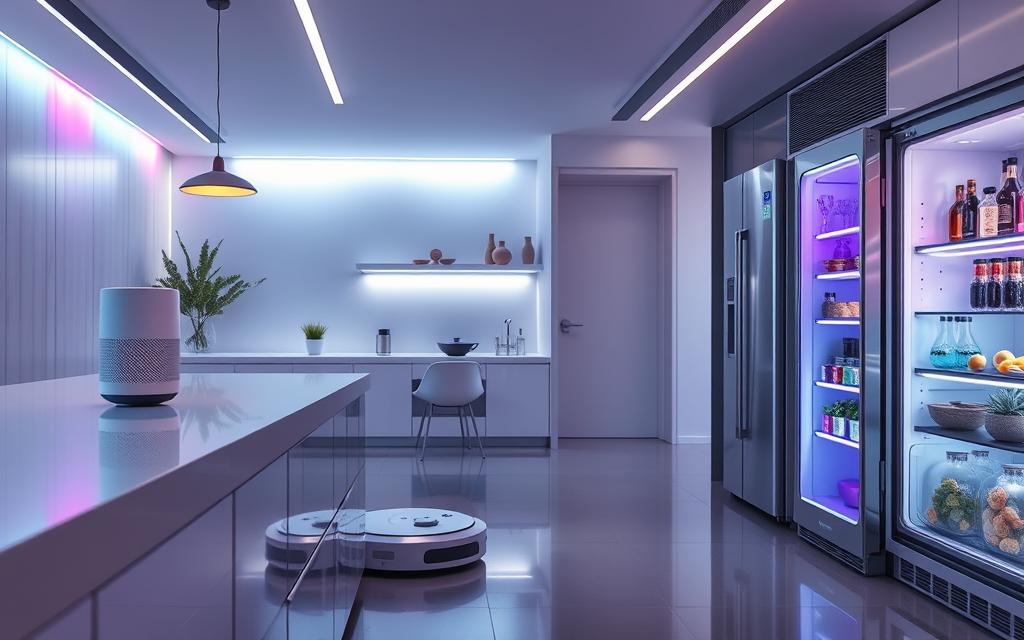
| Category | Examples | Key Benefits |
|---|---|---|
| Smart Home Devices | Nest Thermostat, Philips Hue | Energy efficiency, remote control |
| Smart Wearables | Apple Watch, Fitness Trackers | Health monitoring, fitness tracking |
| Smart Transportation | Tesla vehicles | Advanced safety features, efficiency |
What Does Smart Mean in Technology?
When we talk about “smart” in technology, it’s not just about automation. It’s about combining advanced elements like artificial intelligence and internet connectivity. These parts work together, transforming how devices operate. They become more intelligent and responsive.
The Role of Artificial Intelligence
Artificial Intelligence (AI) in smart devices means they can make decisions on the spot. AI helps these systems process data quickly. This enables devices to learn and change based on how we use them. For example, smart thermostats learn our habits and adjust themselves, saving energy without us telling them to. This shows how smart technology can handle tasks by itself.
Integration of Internet Connectivity
Having internet connectivity is key in smart technology. It lets devices talk to each other and share information. This makes them work better together, forming a connected system. Because of this, we can control things like lights and security cameras from afar. Systems like these show how smart tech makes our lives easier and more integrated.
| Component | Function | Benefits |
|---|---|---|
| Artificial Intelligence | Real-time data processing and decision-making | Increased automation and personalisation |
| Integration with Internet | Enhanced connectivity and data sharing | Remote access and control capabilities |
| Smart Devices | Autonomous operation and intelligent functions | Improved efficiency and user experience |
Understanding these key elements shows us how important “smart” technology is. It’s all about combining AI with internet connectivity. This blend leads to more interaction, efficiency, and convenience in our daily environments.
Benefits of Smart Technology
Smart technology has changed how we live today, making our lives easier. It gives us tools like smart devices that save energy and time. This part will talk about the key benefits smart technology brings to us.
Increased Convenience and Efficiency
Smart technology means moving from old products to connected, automatic systems. It lets us do daily tasks more easily. For example, you can control your house from anywhere. This includes turning lights on/off and managing your security systems without being there.
As smart home tech gets better, it makes our lives both easier and more efficient.
Energy Efficiency and Sustainability
Smart tech is key in making homes more energy-efficient. Smart thermostats and lights adjust to how we live, cutting down our energy use. This not only saves money but is also good for the planet.
These improvements mean our homes use less power and help the environment at the same time.
Enhanced Safety and Security
One of the best things about smart technology is how it makes homes safer. Devices like smart doorbells and cameras let us watch our homes in real-time. This means you can always know what’s happening at home, no matter where you are.
Adding these devices to our homes brings us peace of mind and makes us feel safer.
Smart Technology for Industry
Smart technology is changing the way factories work. It introduces the era of Industry 4.0. It combines the Internet of Things (IoT), artificial intelligence (AI), and cyber-physical systems. This change boosts efficiency and saves costs in the long run. Smart factories with IoT sensors make production faster and more flexible.
Industry 4.0 Introduction
Industry 4.0 revolutionises manufacturing by focusing on instant data use and optimisation. It moves from old mass production to methods valuing flexibility. However, small to midsize firms might struggle with the adoption costs. It shows how important it is to have solutions that control spending well.
Applications in Manufacturing and Production
Smart technology plays many roles in manufacturing, changing it for the better. Important uses include:
- Predictive Maintenance: Predicts equipment issues before they happen, which cuts downtime and repair costs.
- Supply Chain Optimisation: Offers instant insights into stock levels and demand, leading to better supply chain efficiency.
- Enhanced Quality Control: Uses data analytics in quality management to quickly find defects, improving product quality.
- Process Automation: Automates regular tasks, letting people focus on more important work.
Software is becoming more crucial in these areas. ERP and WMS systems, for example, help make operations more efficient and flexible. Real-life examples, from making car parts to tracking food supplies, show how smart technology transforms the industry.
To learn more about how innovation, forward-thinking, and proactive steps lead to success in the Smart Industry, check out this resource.
Human Interaction with Smart Devices
The way we interact with smart devices is changing quickly. This change is driven by algorithms and the limits of technology. In Canada, researchers looked at how smart homes learn from us. They change settings like temperature based on what we like. These systems are quite good at guessing the right room temperatures, showing how important our interactions are with smart tech.
Algorithms and Decision Making
Algorithms are key to making smart devices better for us. They look at our data to make devices work better. But sometimes, they get things wrong, like a room’s temperature. This can make us change how we do things at home to stop the need for constant adjustments. It shows the changing ways we interact with our smart devices.
Understanding Limits and Capabilities
The limits of smart tech deserve our attention. Even as they get better, they can’t always handle complex situations without human judgement.
Expert Ali Etemad in Queen’s University points out the good and bad sides of smart homes. With over 21 billion IoT devices expected by 2025, privacy control is more important than ever. The start of 5G might make privacy issues more complex by connecting devices directly to networks.
To learn more about smart devices, check out the study in IEEE Transactions on Artificial Intelligence. It goes deep into how AI interacts with human behaviour.
| Year | Connected Devices (Billions) |
|---|---|
| 2018 | 18 |
| 2025 (Estimate) | 21 |
| Average Annual Growth | 1 |
Conclusion
Smart technology is changing how we interact with the world. It affects both our personal lives and industries. Through smart tech, we see innovation and more teamwork across communities and businesses.
This point of view shows the need for careful planning in smart tech development. It’s really important in areas like smarter manufacturing, as the Engineering Laboratory suggests.
The future looks bright with smart technology. It will bring in better ways to improve systems for all businesses. Things like machine vision and cloud robotics will help make manufacturing smarter.
At the same time, smart cities will improve public services. This opens doors for businesses to create products that help local communities grow economically.
Yet, we must be careful about smart technology. We should think about security risks and the costs of using it. It’s important to make sure our investments in smart tech are good for both our wallets and the planet.
We’re moving into a future where technology will play a huge role. By embracing new tech carefully, we can make our own choices in a world that’s becoming more automated.
FAQ
What is smart technology?
Smart technology uses AI, internet connectivity, and new technologies to make tasks more efficient. It is seen in various areas.
How does smart technology work?
This technology combines hardware and software with sensors and algorithms. It automates data processing and task execution, making daily activities more autonomous.
Can you provide examples of smart technology?
Sure, smart tech is seen in devices like Nest thermostats and Philips Hue lights. It also includes the Apple Watch and Tesla’s driver systems.
What does “smart” mean in the context of technology?
In this context, “smart” means devices can analyze data, make AI-based decisions, and connect online to share data.
What are the benefits of smart technology?
The benefits include making life more convenient through automation. It also saves energy and improves safety with things like smart locks.
How is smart technology impacting industry?
It’s transforming industry via Industry 4.0. This includes IoT and AI in manufacturing, leading to better efficiency and lower costs.
What is the role of algorithms in smart technology?
Algorithms analyze user data to improve decision-making. This enhances how users interact with technology.
Are there limitations to smart technology?
Yes, smart tech helps in decision-making but struggles with unpredictable situations. This shows the need for human oversight.

